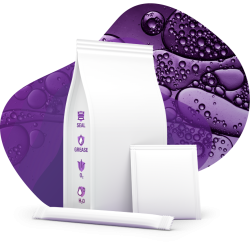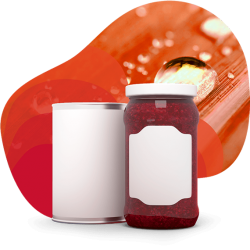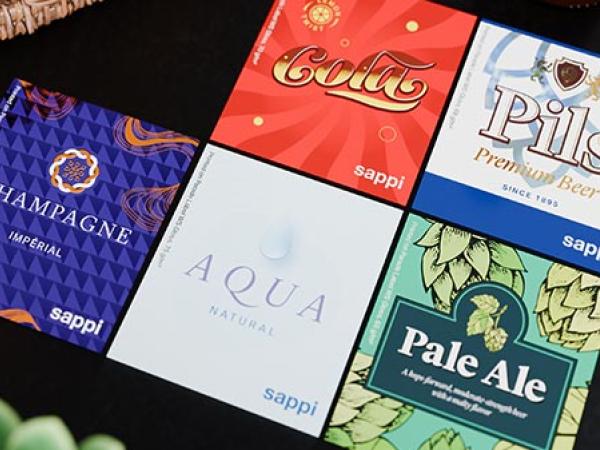
Thinking packaging circular

The packaging industry is developing innovative solutions to replace plastic with better recyclable paper packaging. Marco Eikelenboom, designated CEO Sappi Europe, explains in an interview why it is important to focus not only on the material but also on the entire packaging manufacturing process.
Mr. Eikelenboom, how does the pulp and paper sector contribute to the circular economy?
Paper is one of the most commonly recycled materials in the world. A recycled fiber can be reused several times and in the end it can even be used as fuel. But not only the materials we use, but also many of our manufacturing processes are circular by design. At Sappi, we use energy, but we also produce renewable biofuels to power our mills. Today we also sell green electricity from some locations to the local power grid. We use water, but then safely return it to the environment. These are just a few of the most popular examples.
The world is facing a plastic crisis. How can your industry contribute to the solution?
With creativity and ingenuity that unleash the power of trees. Paper beats plastic in terms of recyclability. Even if it's not disposed of properly, these products biodegrade fairly quickly in nature. However, in order to replace plastic packaging with paper across the board, real innovations are required. We have some groundbreaking products that show what is possible. Many of the solutions we have developed support the move from plastic packaging to renewable paper-based solutions that still meet strict health and safety standards.
We recently saw a number of product launches in the German market packaged in innovative Sappi paper packaging, especially confectionery. What exactly is new about this?
Sappi's “functional” papers support the move away from plastic and multilayer laminates towards renewable mono-packaging solutions based on paper. They offer product protection and are recyclable at the same time. We developed these papers to provide tailor-made barriers for oxygen, moisture, grease and mineral oil for a wide range of applications and thus radically expand the limits for paper-based applications. With their barrier functionality, heat sealability and good conversion and printing results, our functional papers are becoming more and more popular on the market. It's exciting to see how our product innovations help brand owners meet the sustainability commitments and promises they have made to reduce or eliminate plastic packaging and support the transition to a circular economy.
Wood fiber-based packaging solutions with a barrier function also contain small amounts of polymers. How does this affect the recyclability?
The innovative, functional papers are coated with a very thin water-based barrier layer that also contains fossil-based polymers. Our continuous innovation will lead us to discover and perfect new ways to create these barriers in the future without fossil-based polymers. For now, however, we are making sure that the products we bring to market are recyclable. We use independent institutes to evaluate and confirm the recyclability of our functional papers.
With the Single-Use-Plastics-Directive, approved in 2019, the EU has set very strict measures to reduce the consumption of single-use items and plastic in general. How do you rate this directive?
The directive started with a serious effort to combat plastic pollution. But it has become a far-reaching policy that ultimately affects many products that are neither single-use nor plastic. For example, the definition of plastics is now so broad that it actually contains some fiber-based packaging materials that contain very little polymer. If we propose such a broad approach, Europe will lose focus on what we are all trying to achieve, which is less plastic pollution and more sustainable consumption patterns. And it undermines innovation in companies like ours. The path to the circular economy is gradual. The European policy framework should encourage and encourage continuous improvement and innovation.
Sappi is committed to "responsible sourcing". What does that mean exactly?
In view of the dependence of our business on forests, it is very important to us to source our wood fibers responsibly and from well-managed forests. In 2020, 80 percent of the wood fibers we sourced for our mills in Europe came from certified forests. Forest certification systems enable the validation of management practices in the forest and establish traceability across the supply chain. As such, they form a very important part of our responsible sourcing. In South Africa where we own and lease 390,000 hectares of land we also have a unique role to play in promoting healthy forests and landscapes. For example, on our land the commercial trees are grown in plantations but other land is reserved to conserve natural habitat and biodiversity, including native forests and wetlands.
Sappi recently joined the 4evergreen Alliance. What is it and what is its goal?
There is an African proverb that says, “If you want to go fast, go alone. If you want to go far, go together.” Given the environmental challenges the world is facing, we have to go fast and far. That is why we joined the 4evergreen alliance. Here, manufacturing companies like Sappi sit around a table with companies like IKEA, Nestle and Mars and work out strategies on how fibre-based packaging can be designed, collected and recycled to become even more circular in the future. Together we have set ourselves the ambitious goal of achieving a recycling rate of 90 percent for fiber-based packaging in Europe by 2025. I am confident that if we “go together” we can do this.
About Sappi
Sappi is a leading global provider of sustainable wood fiber products and solutions. As a company that relies on renewable natural resources, Sappi focuses on sustainability in all areas of operation. In Europe, Sappi is a leading manufacturer and supplier of coated fine paper, packaging and specialty papers. Around 5,700 employees work in the 14 business branches and ten Sappi plants in Europe. Three of these plants are located in Germany.







